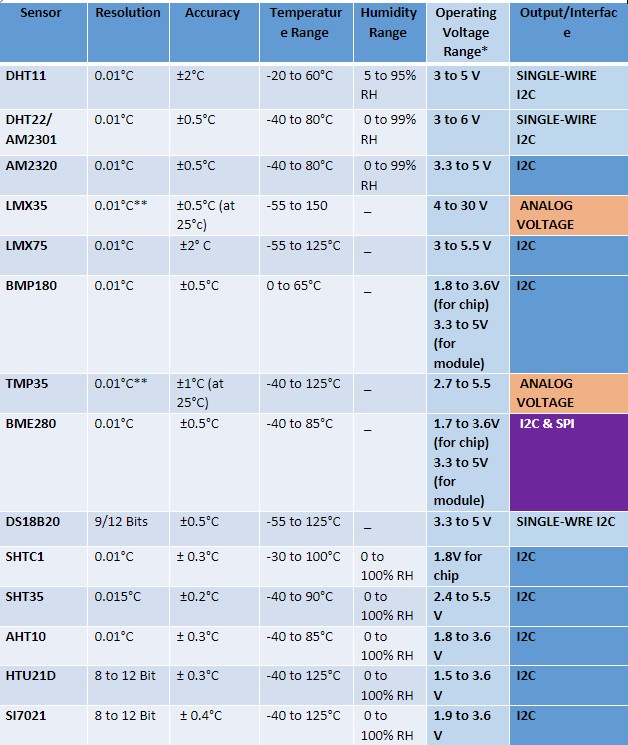Introduction
Thermometers and temperature sensors are widely used in many sectors. With advancements in science and technology, different methods and sensors have been developed to measure temperature. These sensors are used in various areas, including industry, homes, labs, and more.
Many of these sensors and modules are designed for easy integration with microcontrollers and microprocessor systems. For example, these sensors are designed to work with microcontrollers like Arduino, considering factors such as their working voltage and communication protocol.
However, choosing the right sensor can be challenging due to the wide variety available. In this tutorial, we will introduce the most common temperature sensors in the market, their key features, and important factors to consider when selecting one.
What you will learn
• Important factors for choosing the temperature sensor
• Different models of temperature sensors
• Key specifications of each sensor
• A general sensor comparison
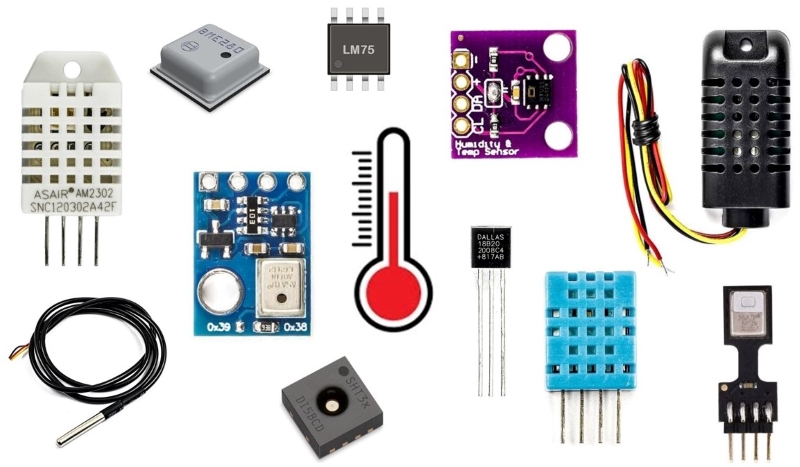
How to Choose the Right Temperature Sensor?
With colorful temperature sensors available, it can be challenging to choose the right one. However, certain priorities and key parameters can help in the selection process. So, first, let’s take a look at these key parameters to consider when choosing a thermometer.
Resolution
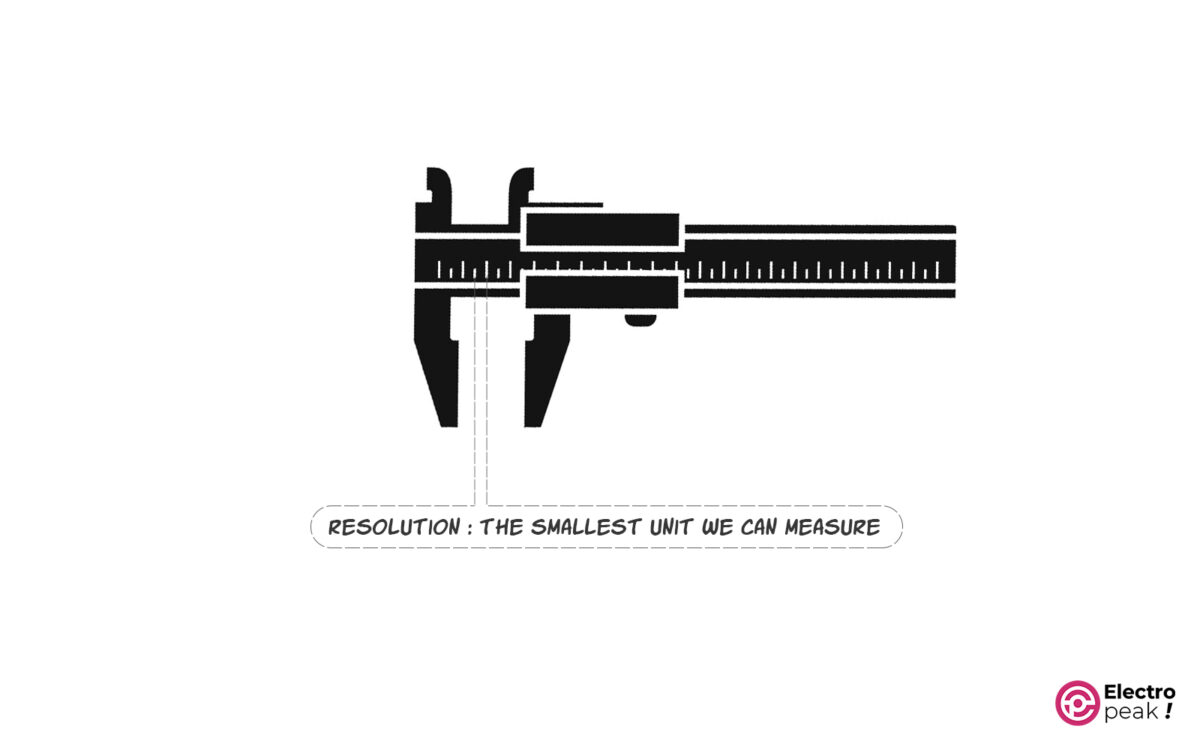
Resolution is the smallest unit a measuring tool can calculate. For example, a temperature sensor with a resolution of 0.01°C can detect temperature changes of that size. The smaller the number, the higher the resolution. Therefore, when monitoring a house temperature, for example, a 1°C resolution sensor will do the job for us. But in a lab, for instance, we’d better have smaller resolutions. Therefore, resolution is perhaps the most important factor when choosing a measuring device.
Accuracy (error)
This factor, along with resolution, is also vital when selecting a sensor. It is the maximum (or typical) possible error, and it must be mentioned in the datasheet and product specifications. For example, a sensor with 0.01°C resolution and ±0.02 accuracy can detect temperatures up to one-hundredth of a degree, but the actual temperature may vary by 0.02 degrees. Note that more sensitive conditions require smaller accuracy—just like resolution.
To differentiate these two parameters, remember that the measurement precision in digital sensors is generally called "resolution" (a positive number or several bits), whereas the measurement error is known as "ACCURACY" (often represented with a '±' sign).
Range
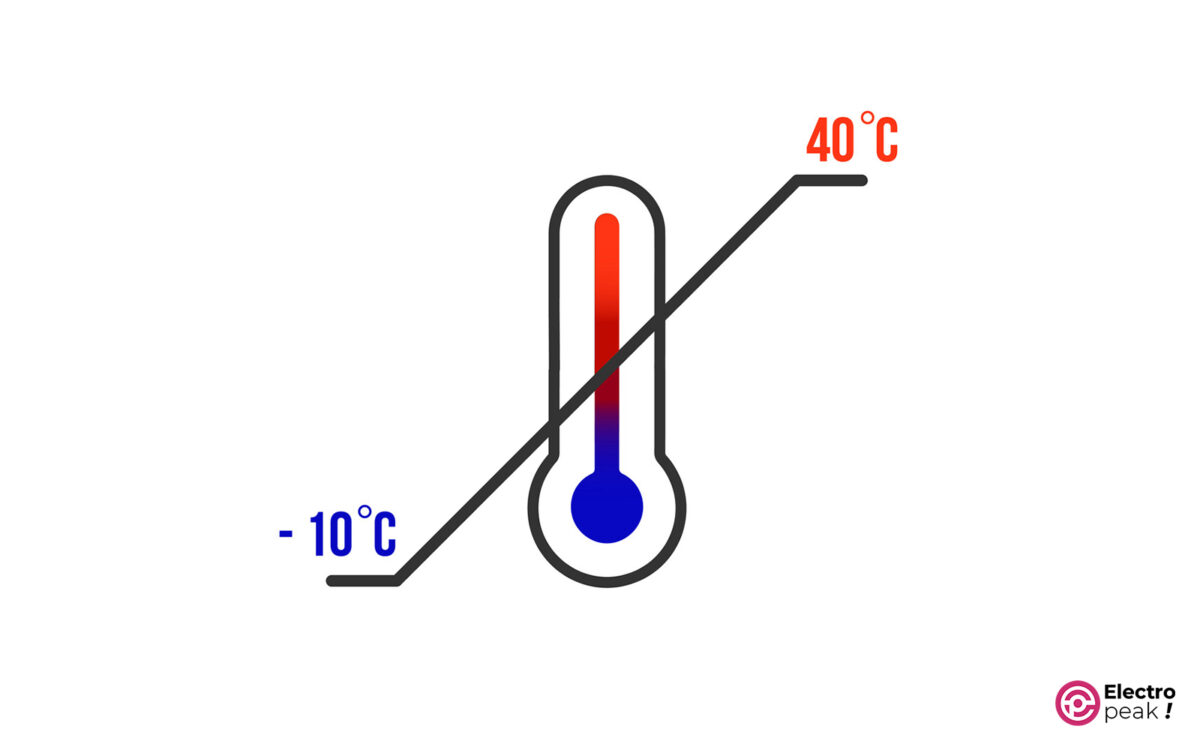
The range is the parameter (temperature, in this case) within which the sensor or measuring device functions well without damage. For example, a sensor with a range of +10°C to +85°C is reliable within that range. Going beyond that range may damage the sensor or give inaccurate readings, so keep this in mind when choosing a sensor.
Output Type & Sensor Communication Protocol
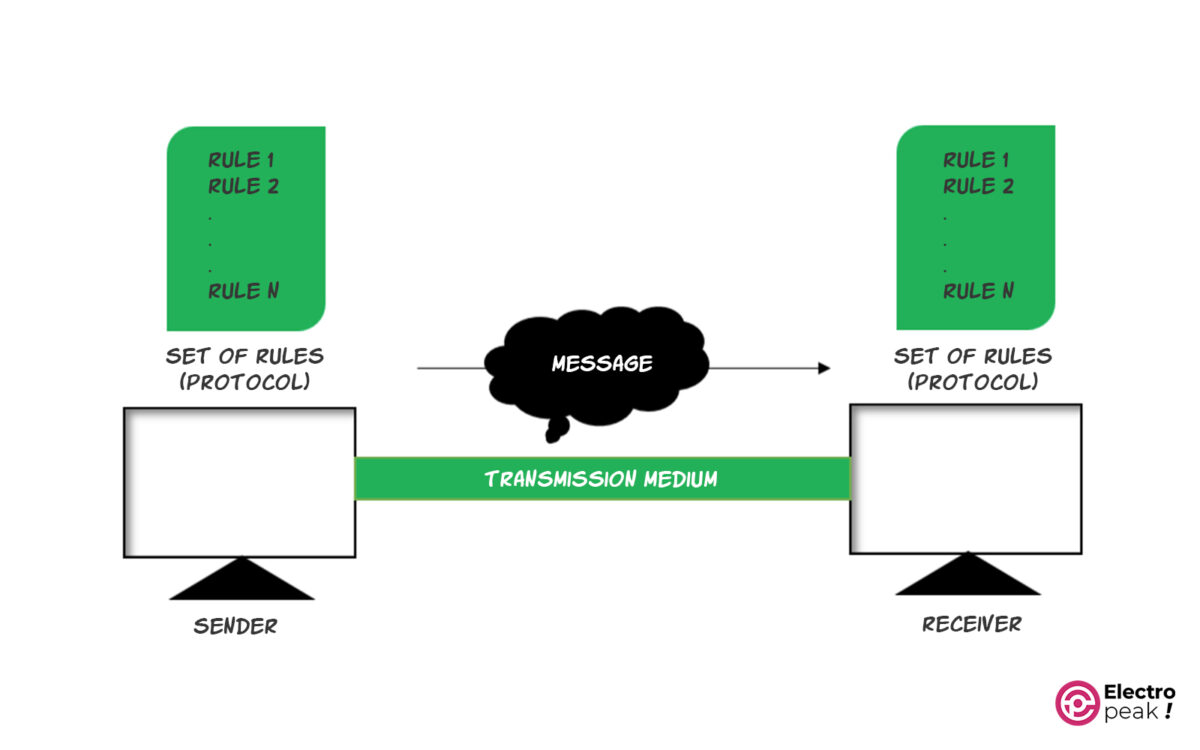
The communication protocol is another important factor for controlling and using the sensor’s output. The sensor’s output can be current, voltage, analog, or digital. We can interface a digital sensor with different protocols such as I2C, SPI, CAN, etc. This factor should also meet the project requirements and be mentioned in the datasheet or specification list of the sensor.
Sampling Rate and Data Transfer Speed

The sampling rate is the number of measurements a sensor takes per second. It’s crucial for quick temperature monitoring. A higher sampling rate means more measurements per second.
Higher sampling rates require faster data transfer so that it can transfer the sensor data to the output at the right time and also apply the necessary control commands to the sensor.
I’ll give you two examples. In a lab, when we have a chemical reaction, even temperature changes in one fraction of a second are crucial, so the measurement speed of the sensor should be high enough to monitor temperature changes in a few milliseconds. But for places like a greenhouse, a high sampling rate isn’t necessary.
Power Consumption
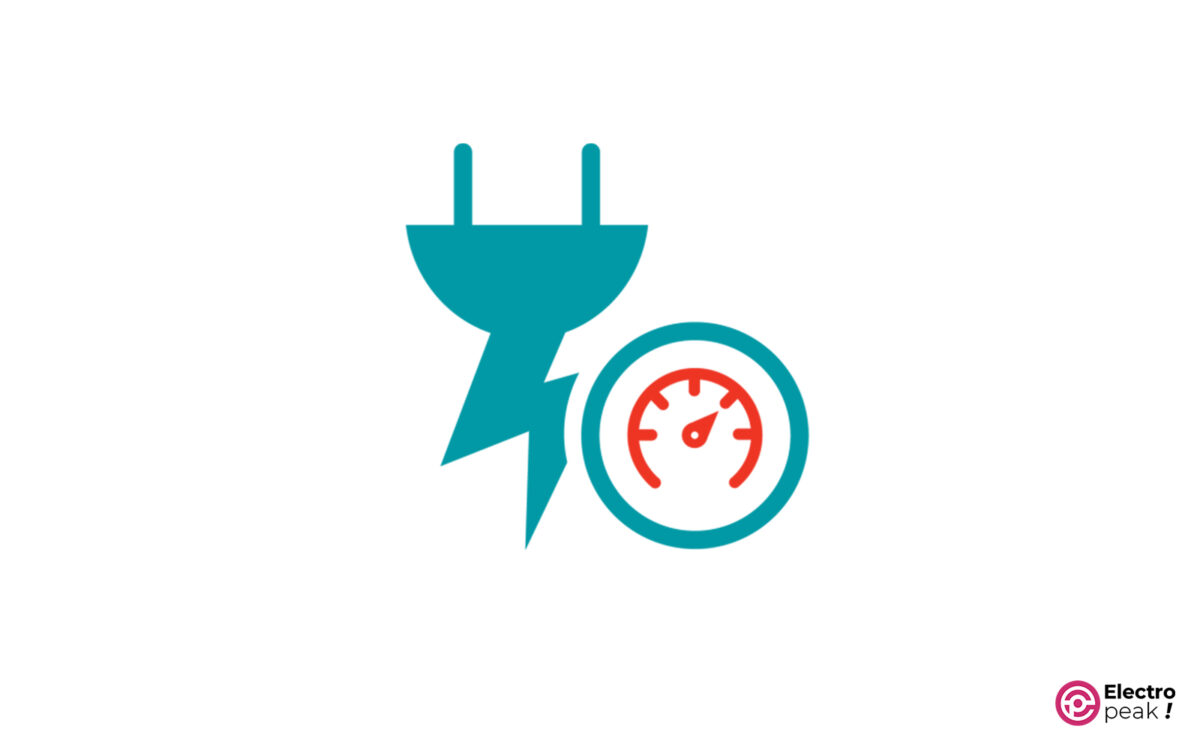
We must know the power consumption of each component to choose the right power supply. The higher the power consumption, the bigger and more expensive the power supply. So pay attention to the operating voltage and current consumption, especially with battery-powered systems.
Price

Price is a crucial factor in any project. It may not be very important in school experiments or hobbies, but when it comes to business, it will have a huge impact on everything.
The sensor price depends on resolution, range, accuracy, speed, and other quality characteristics.
Other factors like dimensions, materials, lifespan, and user’s skill level are important too. For a complete list of specifications, check out the datasheet or the guide sheet of the component.
Now, let’s introduce popular temperature sensors and their main specs:
1- DHT11/DHT22 Temperature and Humidity Sensor
DHT sensors are one of the most common sensors in electronics. These digital sensors have advantages like reasonable prices, low power consumption, and a simple setup.
DHT sensors have a built-in Analog-to-Digital conversion chip that converts the measured values of temperature and humidity into a digital output signal. And they only use one data line for communication. These features, along with low power consumption, make this family of sensors/modules a particularly good choice for working with microcontrollers like Arduino.
DHT11 and DHT22 are the most common models. The less common type, DHT12, has recently joined the market.
Another unique feature: these sensors can transmit data up to 20 meters away.
DHT11

The DHT11 sensor is a low-cost temperature and humidity sensor. Remember, when we talk about “humidity,” it means the relative percentage of air humidity.
DHT11, which is available in the market both as a module and a sensor, is the most popular temperature and humidity sensor for boards such as Arduino, ESP, Raspberry Pi, etc.
DHT11 Specifications
• Communication Protocol: single-wire
• Operating voltage range: 3 to 5 volts
• Temperature range: -20 to 60°C
• Resolution: 0.01°C
• Temperature accuracy: ±2°C
• Humidity range: 5 to 95% relative humidity (RH)
• Humidity accuracy: ±5%
• Sampling frequency: 1Hz (one sample per second)
For more information, you can download the DHT11 sensor datasheet below.
To interface the DHT sensor, you can visit the following link: Interfacing DHT11 Temperature and Humidity Sensor.
DHT22

DHT22 is very similar to DHT11 in terms of performance, pins, and even size. However, it offers better accuracy and a wider range, which explains its relatively higher price in the market.
DHT22 is also known as AM2302 or RHT03. It’s also a highly reliable sensor with excellent long-term stability. Like DHT11, it’s also available in the market both as a module and a sensor.
DHT22 Specifications
• Communication Protocol: single-wire
• Operating voltage range: 3 to 6 volts
• Temperature range: -40 to 80°C
• Resolution: 0.01°C
• Temperature accuracy: ±0.5°C
• Humidity range: 0 to 99% relative humidity (RH)
• Humidity accuracy: ±2%
• Sampling frequency: 0.5Hz (one sample per two seconds)
For more information, you can download the DHT22 datasheet below.
To interface the DHT sensor, you can visit the following link: Interfacing DHT11 Temperature and Humidity sensor.
Main Differences between DHT11 and DHT22
Temperature range and accuracy
• DHT11: -20 to 60°C with an accuracy of ±2°C
• DHT22: -40 to 80°C with an accuracy of ±0.5°C
Humidity range and accuracy
• DHT11: 5 to 95% with an accuracy of ±5%
• DHT22: 0 to 99% with an accuracy of ±2%
You can purchase the DHT sensors/modules from the links below.
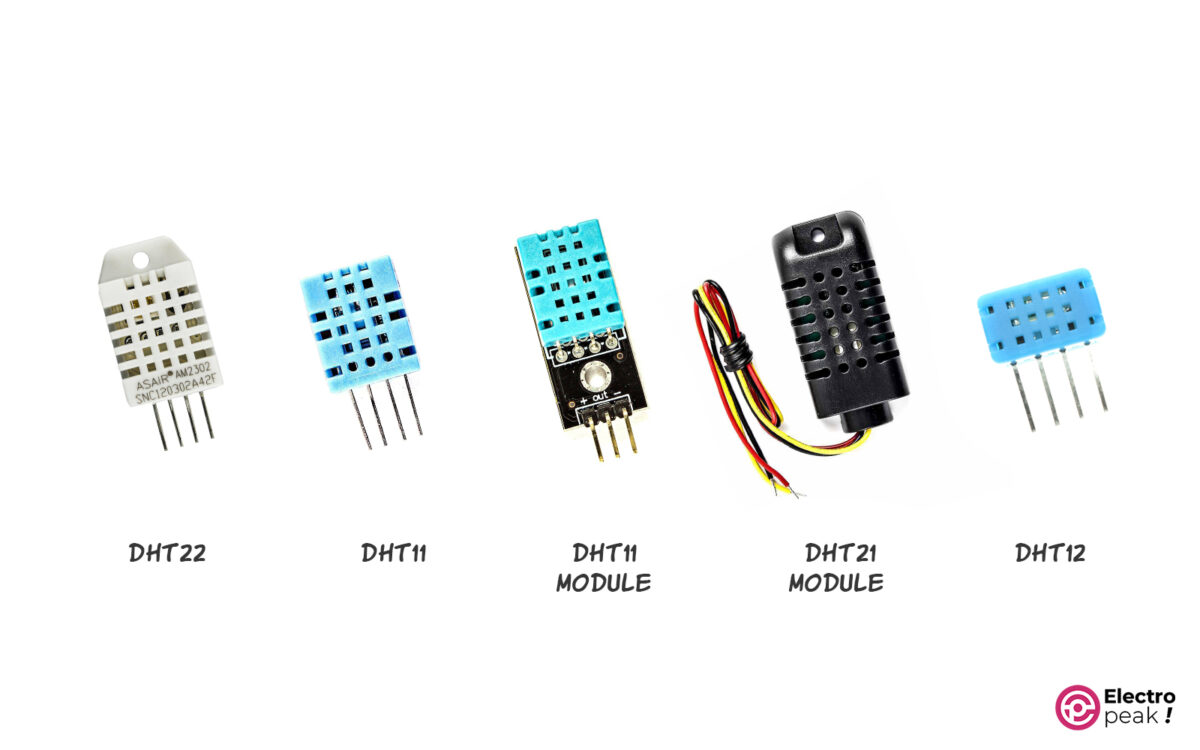
2- AM2320 Temperature and Humidity Sensor
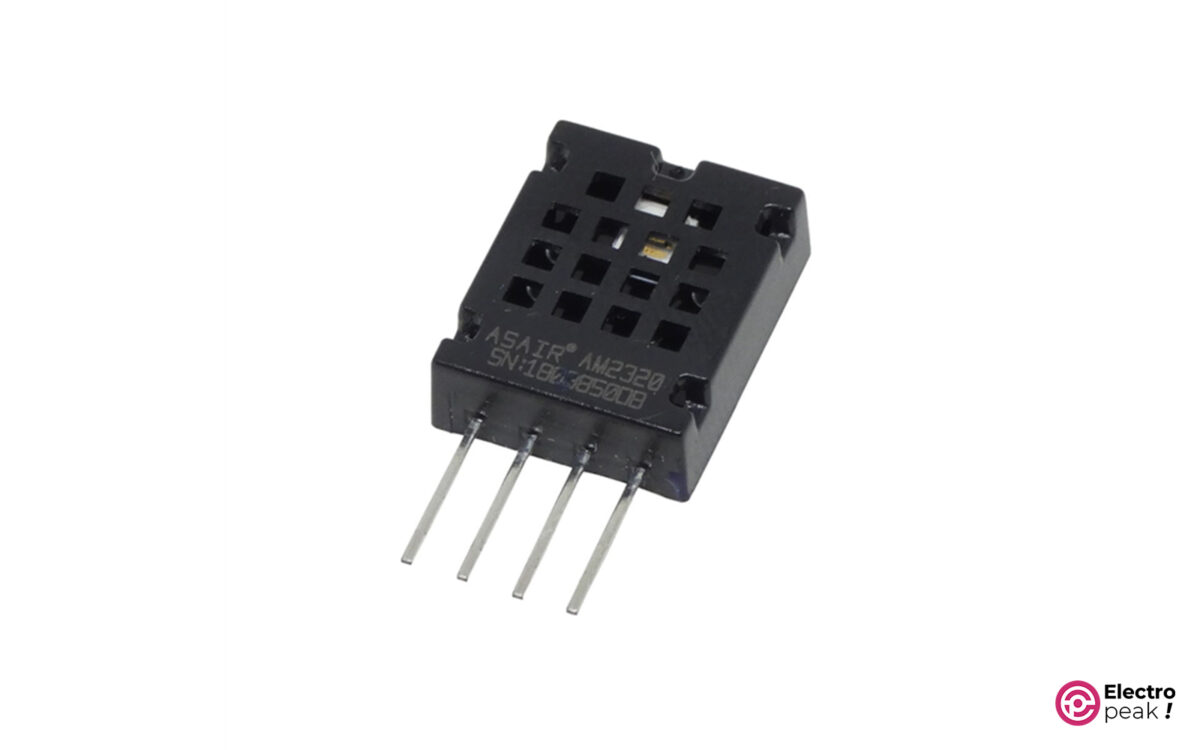
AM2320 is exactly like DHT sensors, except that it uses the I2C protocol.
AM2320 Specifications
• Communication Protocol: standard I2C and single-wire I2C
• Sending data up to 20 meters away
• Operating voltage range: 3.3 or 5 volts
• Accuracy: ±0.5°C and 3% relative humidity
3- LMX35 Temperature Sensor
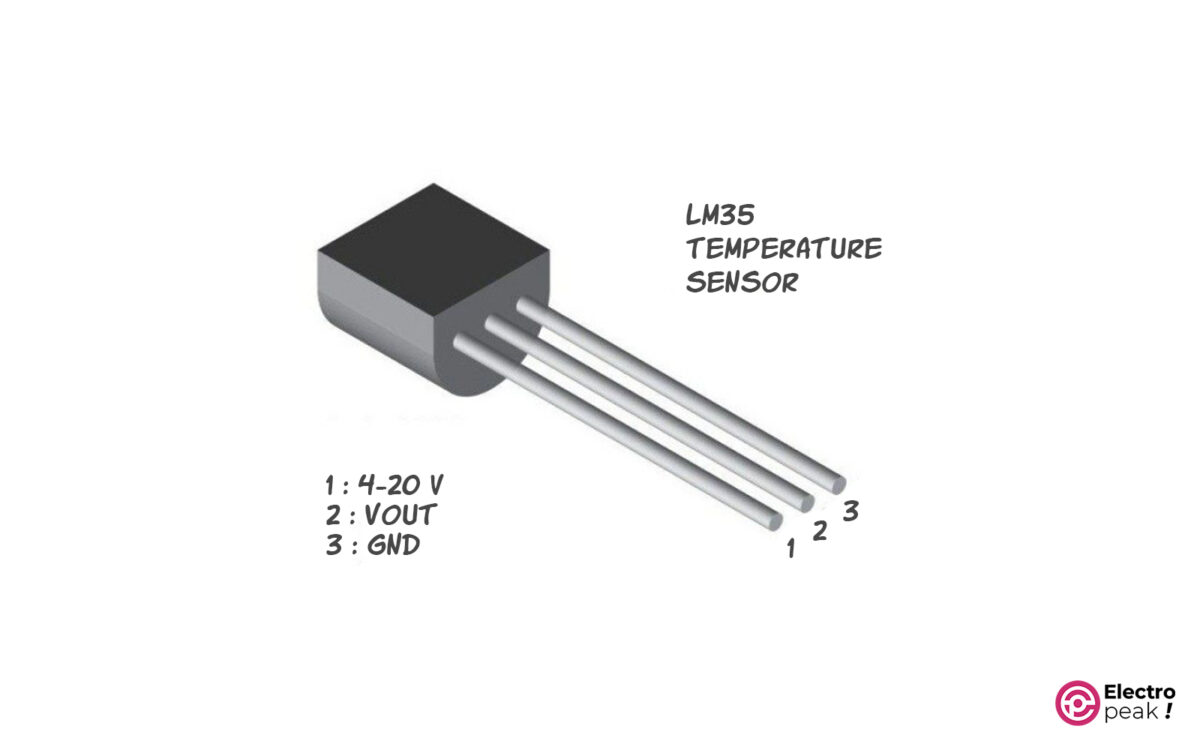
Next, we have the LM35 family, also known as LM35DZ, which are high-resolution temperature sensors that provide an analog voltage proportional to the temperature. You can measure the temperature by reading the voltage.
Different models of the LM35 series are internally calibrated in °C, °K, or °F, so they don’t need any external calibration.
These sensors have an accuracy of ±0.25°C for room temperature and ±0.75°C for the temperature range of -55°C to +150°C.
Reading data from these sensors is simple due to their linear output, internal calibration, high resolutions, and low output impedance.
Since LM35 consumes only 60 µA of current, the heat production and the self-heating phenomenon are not very significant.
Various models of this series have similar performances, but different calibration methods. LM35DZ, LM355, and LM34 are calibrated in °C, °K, and °F, respectively. The output changes by 10mV per degree.
LMXX Specifications
• Output: analog voltage
• Operating voltage range: 4 to 30 volts
• Temperature range: -55 to 150°C
• Temperature accuracy: ±0.5°C (at 25°C)
• Communication with Arduino: analogRead()
Here are the LMXX sensor datasheets:
To interface the LM3X temperature sensor with Arduino, install the LM35 library in the Arduino software.
The LM35 library zip file for Arduino.
LM35 Sensor Wiring with Arduino
Connect the IC’s output pin to an analog input of Arduino.
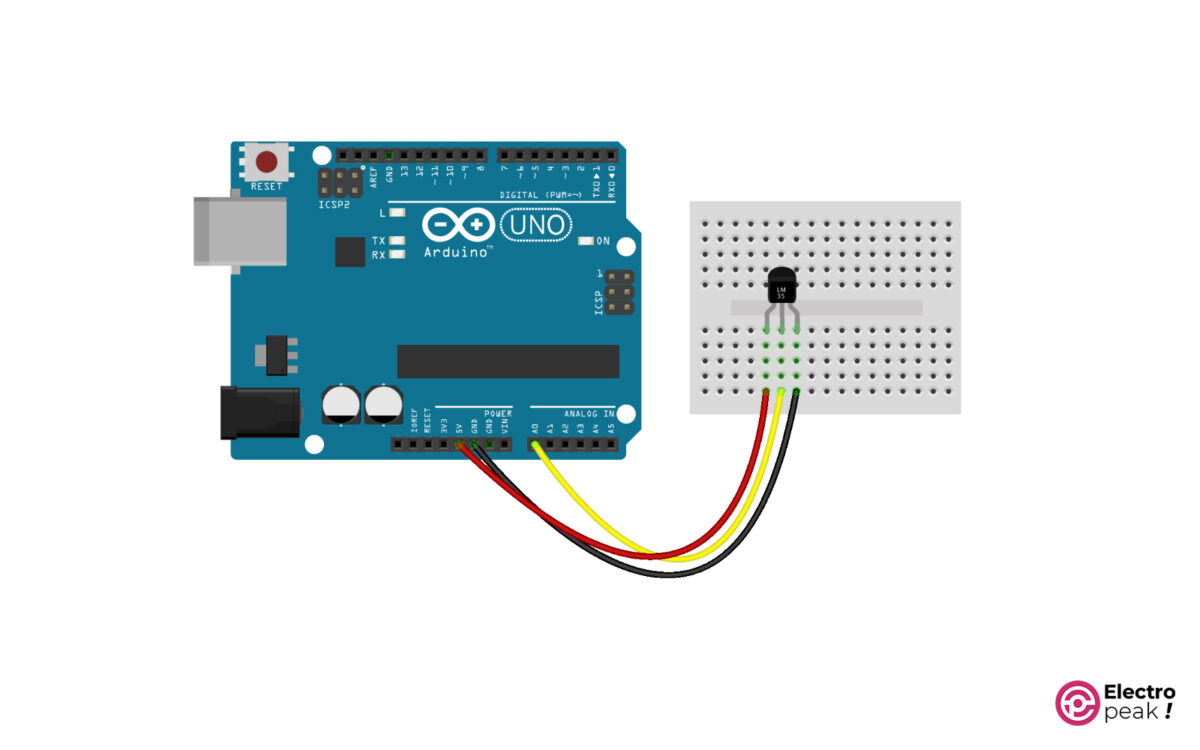
You can purchase LM35 temperature sensors from the links below.

4- LM75 Temperature Sensor

LM75 is a temperature sensor that uses the I2C communication protocol. So, unlike the LM35 series, it’s a digital sensor.
LM75 can somehow function like a thermoswitch by activating/deactivating certain pins to set a specific temperature for an alarm system.
LM75 Specifications
• Communication Protocol: I2C
• Operating voltage range: 3 to 5.5 volts
• Temperature measurement range: -55 to 125°C
• Measurement accuracy: ±2°C (over the full measurement range)
• Current consumption when active: usually 250 µA (1 mA at most)
For more information, you can download the module datasheet below.
To interface this sensor, you can visit the following link: Interfacing LM75 Sensor with Arduino.
You can purchase LM75 temperature sensors from the following links.
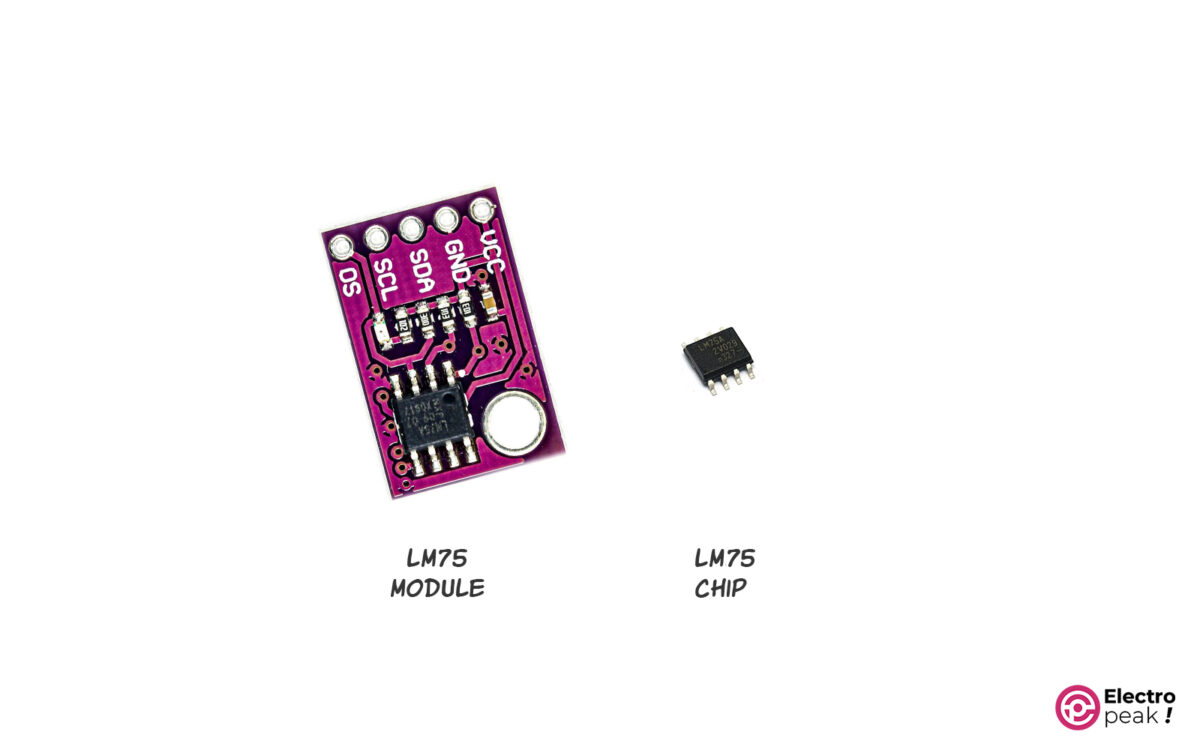
5- BMP180 Pressure and Temperature Sensor

BMP180, mainly used as a pressure sensor, is also considered as a thermometer sensor. So, it works well for weather forecasting.
BMP180 Specifications
• Communication protocol: I2C
• Operating voltage range: 1.8 to 3.6 volts (sensor chip) / 3.3 to 5 volts (sensor module)
• Temperature range: 0 to 65°C
• Temperature accuracy: ±0.5°C (at 25°C)
For more information, you can download the BMP180 pressure and temperature sensor datasheet below.
You can purchase the BMP180 pressure and temperature module from the link below.
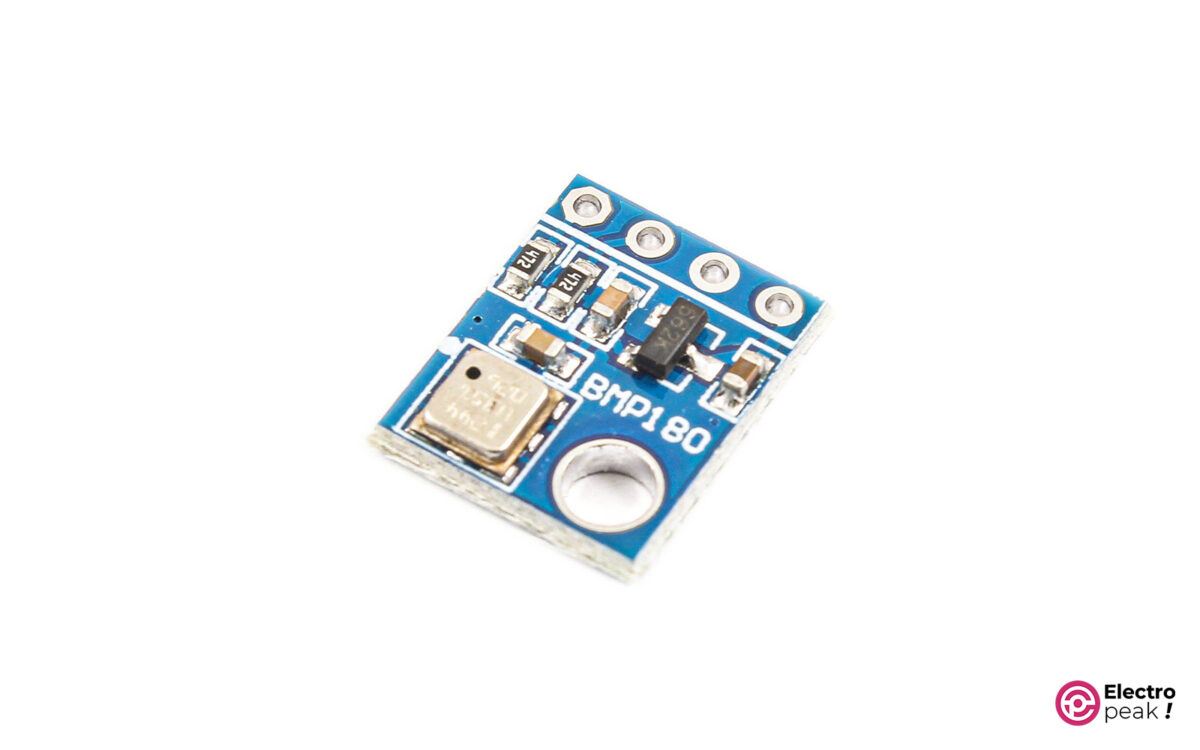
6- TMP35/36/37 Series Temperature Sensor
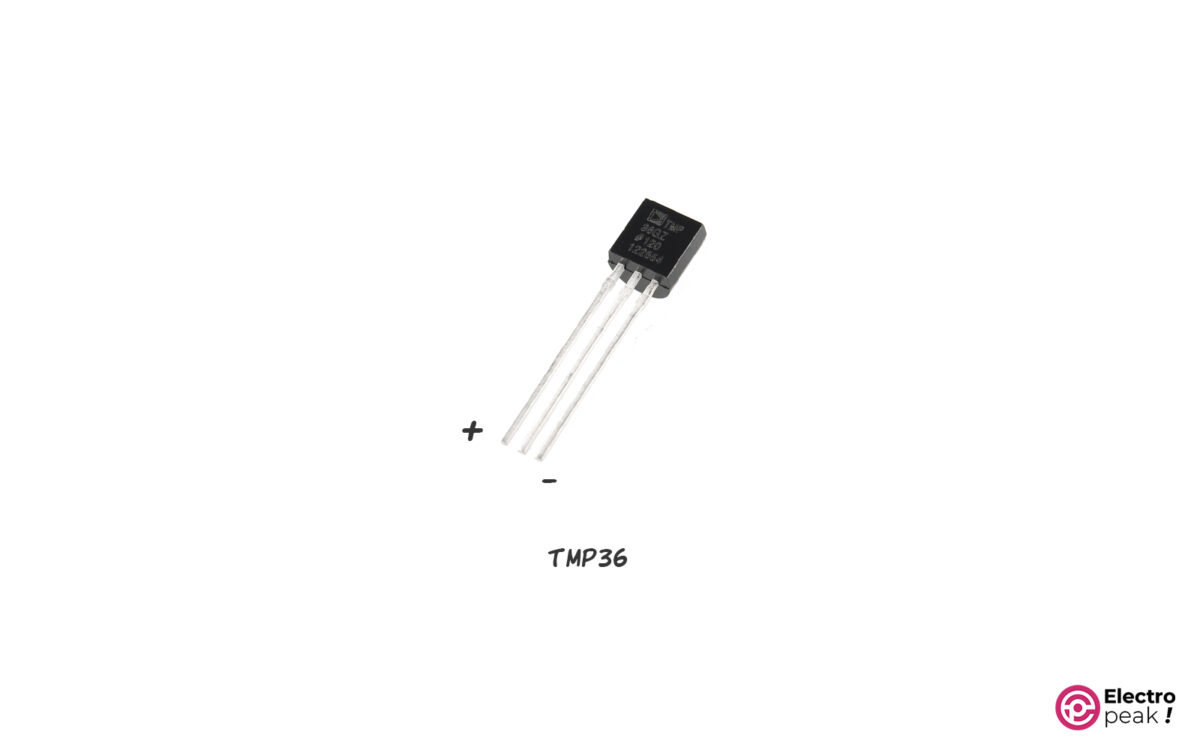
TMPs, like the LM35 series, are analog temperature sensors. They provide a voltage output proportional to the temperature.
TMPs are internally calibrated to measure temperatures in degrees Celsius.
TMP35 has a 250mV output at 25°C and functions similarly to LM35/LM45. It also measures temperatures from 10 to 125°C.
TMP36, on the other hand, has a 750mV output at 25°C, and it measures temperatures from -40 to +125°C. Its voltage-to-temperature ratio is also 10mV/°C, just like TMP36 and LM35.
TMP37 measures temperatures between 5 to 100°C and has a 500mV output at 25°C. Likewise, its voltage-to-temperature ratio is 20mV/°C.
TMP3X Specifications
• Output type: analog voltage
• Operating voltage: 2.7 to 5.5 volts
• Temperature range: -40 to 125°C
• Temperature accuracy: ±1°C (at 25°C)
• Communication with Arduino: analogRead()
For more information, you can download the TMP sensor datasheet below.
You can purchase the TMP temperature sensors from the link below.
7- BME280 Pressure, Humidity, and Temperature Sensor

BME280 is a digital sensor that measures humidity, temperature, and pressure. You can interface both with I2C and SPI protocols.
This sensor is small in size, has great accuracy and efficiency, and measures three different parameters—temperature, humidity, and pressure. It’s a great option for battery-powered devices like GPS modules and headsets. It’s also useful for monitoring buildings and smart homes.
BME280 Specifications
• Communication protocol: I2C and SPI
• Operating voltage range: 1.7 to 3.6 volts (sensor chip) / 3.3 to 5 volts (sensor module)
• Temperature range: -40 to 85°C
• Temperature accuracy: ±0.5°C (at 25°C)
For more information, you can download the datasheet below.
To interface the BME280 module, you can visit the following link: Interfacing BME280 Module with Arduino.
You can purchase the TMP temperature sensors from the link below.
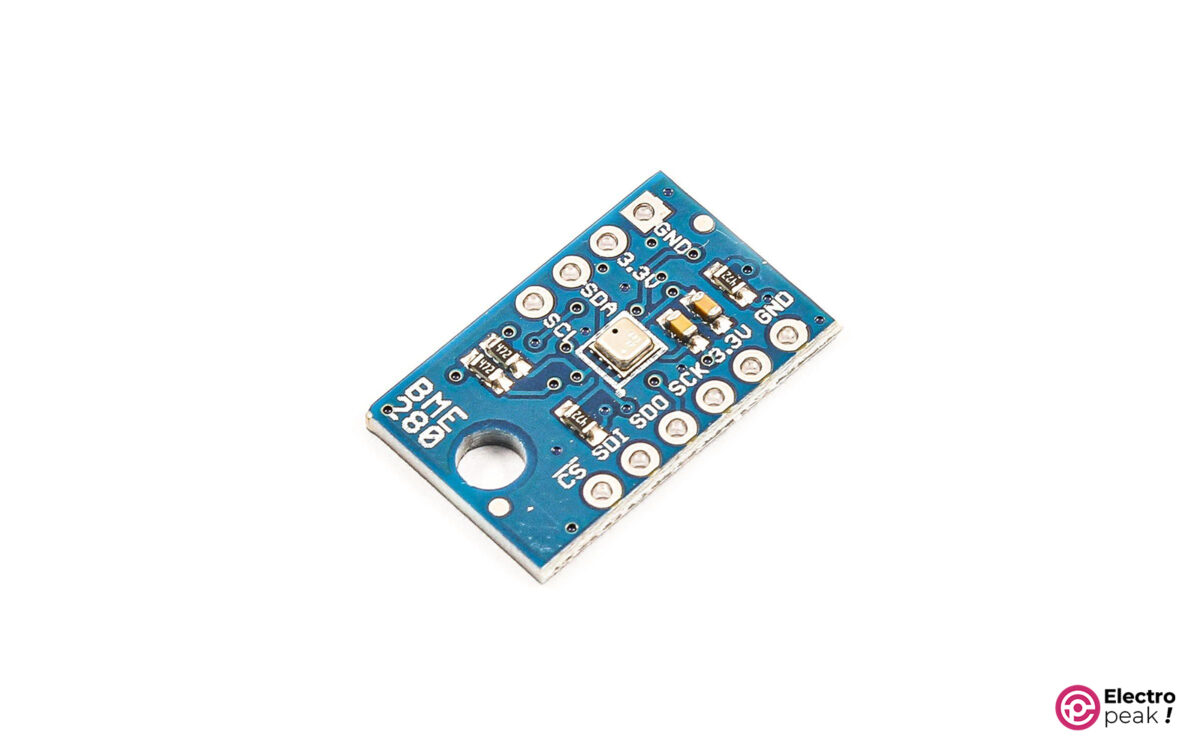
8- DS18B20 Temperature Sensor
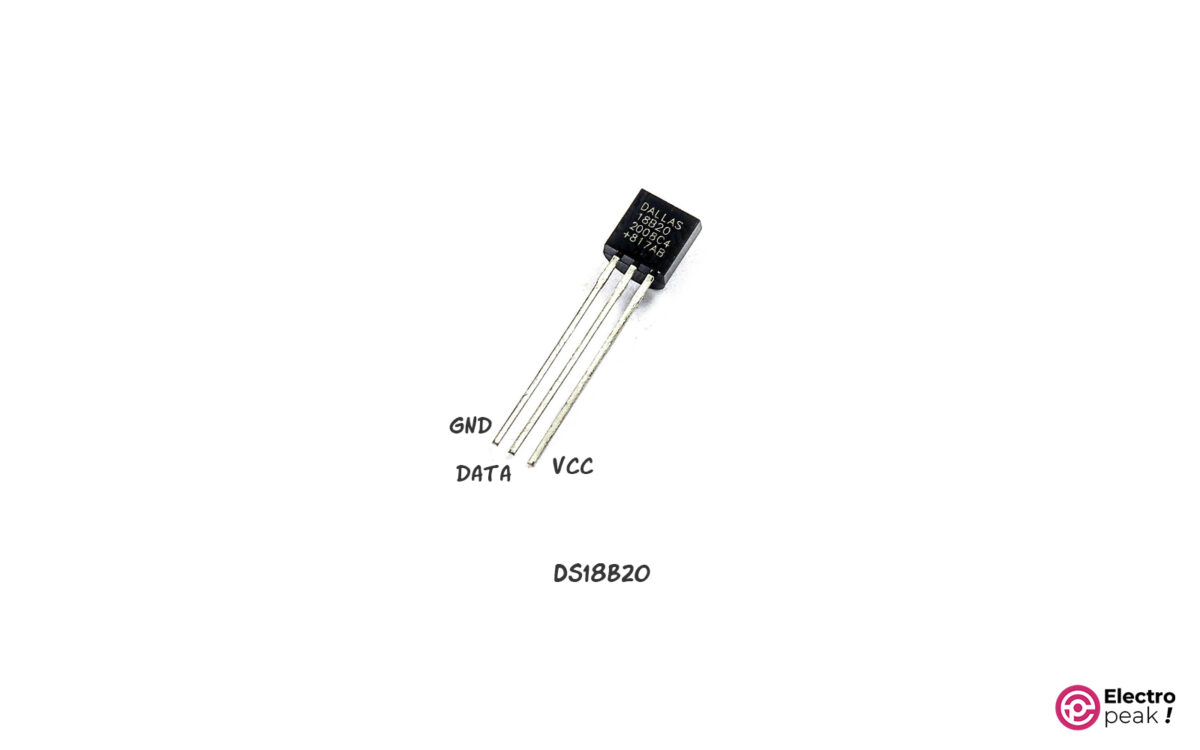
DS18B20 is a digital temperature sensor with a resolution of 9 to 12 bits. Like DHT, it uses digital single-wire communication.
DS18B20 has an alarm system that allows users to set lower- and upper-temperature limits. When the sensor detects a temperature outside those limits, it will trigger an output.
Each DS18B20 has its own 64-bit serial code. This means we can control many of these sensors with only one data line and read their values one by one.
Sensor applications: monitoring and controlling temperature in buildings and vehicles, and heating/cooling systems in large environments.
DS18B20 Specifications
• Communication protocol: Digital Single-wire
• Operating voltage: 3 to 5.5 volts
• Temperature range: -55 to +125°C
• Output resolution: 9 to 12 bits
• Temperature accuracy: ±0.5°C (between -10 to 85°C)
For more information, you can download the datasheet below.
To interface DS18B20, you can visit the following link: Interfacing DS18B20 Module with Arduino.
You can purchase the DS18B20 temperature sensors from the links below.
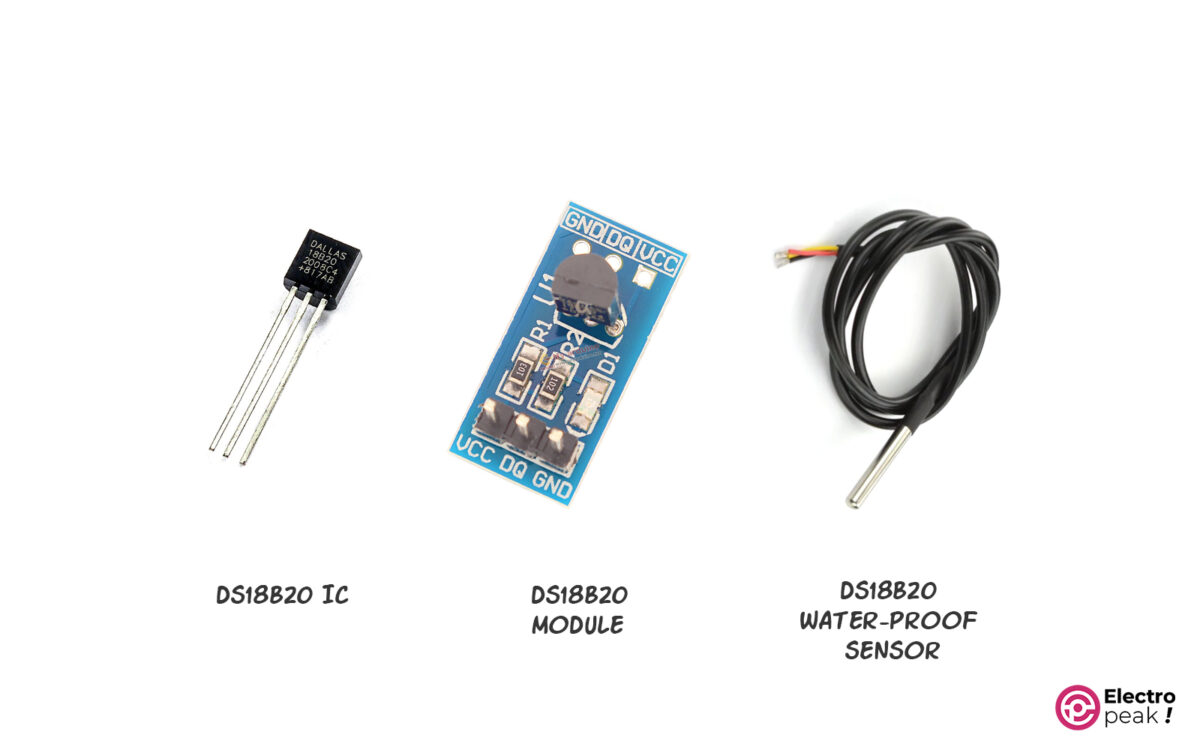
9- SHTC1 Temperature and Humidity Sensor Module

SHTC1 is a digital temperature and humidity sensor with an I2C interface. It’s also linear, internally calibrated, and has a low power consumption.
SHTC1 is perfect for mobile devices due to its small size and low power consumption.
SHTC1 Specifications
• Communication protocol: I2C
• Operating voltage: 1.8 V for the chip
• Temperature range: -30 to 100°C
• Humidity range: 0 to 100% relative humidity
• Accuracy: ±0.3°C and ±3% relative humidity
For more information, you can download the datasheet below.
You can purchase the SHTC1 temperature sensor module from the link below.

10- SHT3X Temperature and Humidity Digital Sensor
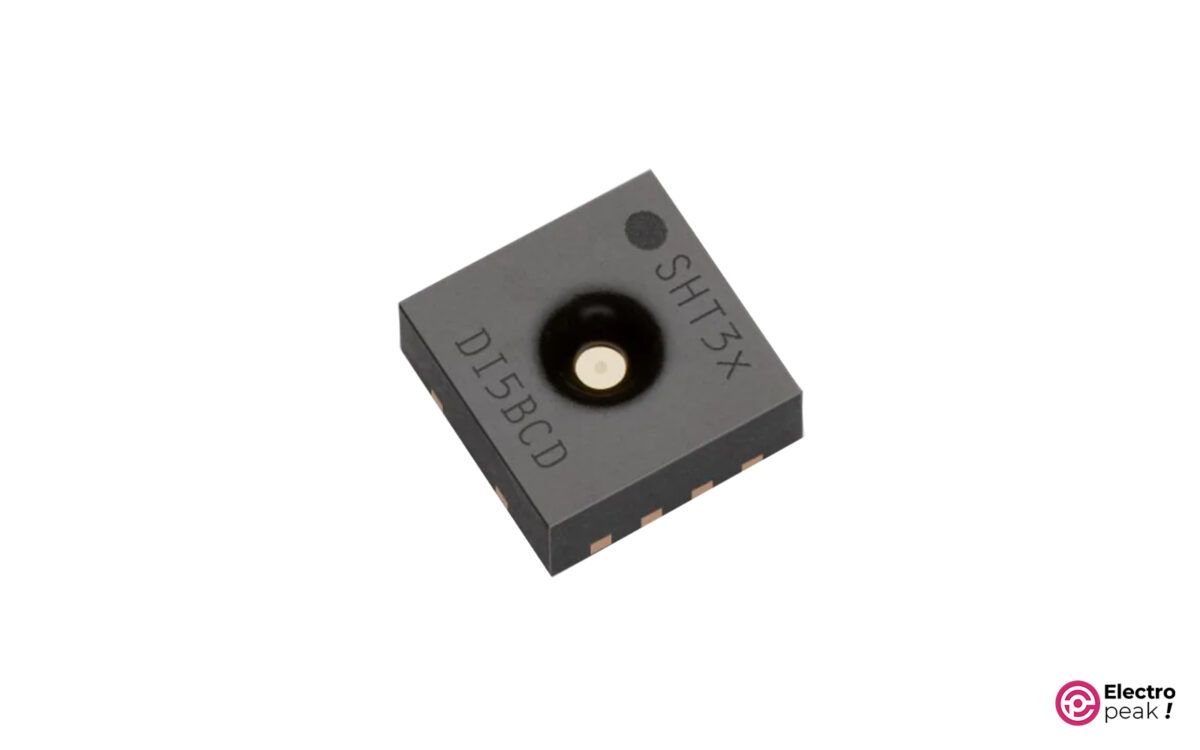
SHT3X is a digital sensor for measuring temperature and humidity. It uses an I2C communication protocol and has advanced signal processing. It also offers the ability to choose the I2C address and supports communication speeds of up to 1 MHz.
SHT3X is also linear and calibrated, and it provides fast setup and measurement.
SHT3X Specifications
• Communication protocol: I2C
• Operating voltage: 2.4 to 5.5 volts
• Temperature range:
SHT30: 0 to 65°C
SHT31: -40 to 90°C
SHT35: -40 to 90°C
• Humidity range: 0 to 100% relative humidity
• Accuracy: ±0.2°C and ±1.5% relative humidity (for SHT35)
For more information, you can download the datasheet below.
To interface SHT3X, you can visit the following link: Interfacing SHT35 Module with Arduino.
SHT10/11/15 are the earlier versions of SHT3X sensors. For more information, you can download the datasheets below.
SHT10/SHT11/SHT15 DATASHEET
You can purchase the SHT3X temperature sensor and module from the links below.

11- AHT15/AHT10 Temperature and Humidity Digital Sensor Module
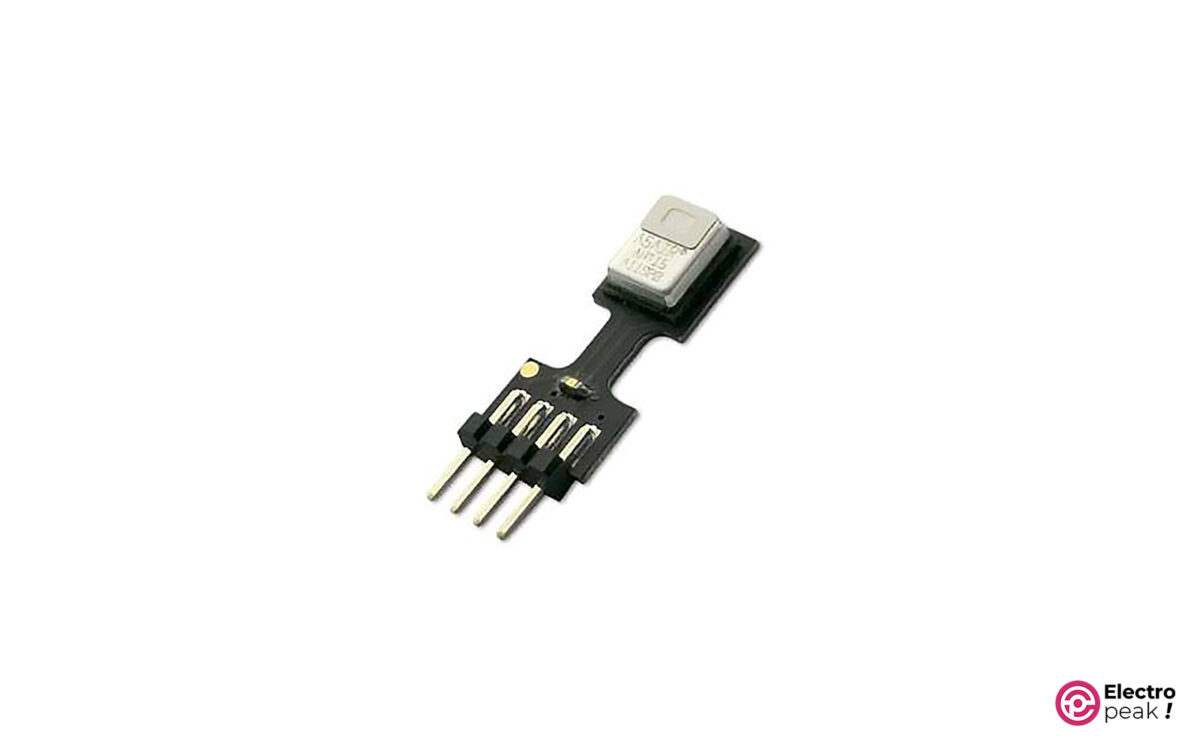
It’s another family of digital sensors for measuring temperature and humidity, which uses an I2C communication protocol. They are also internally calibrated and linear.
AHT15 comes with waterproof and dustproof packaging, making them suitable for challenging conditions without affecting the relative humidity measurement time.
AHT10/AHT15 Specifications
• Communication protocol: I2C
• Operating voltage: 1.8 to 3.6 volts
• Temperature range: -40 to 85°C
• Humidity range: 0 to 100% relative humidity
• Accuracy: ±0.3°C and ±2% relative humidity
For more information, you can download the datasheets below.
You can purchase the AHT temperature sensor and module from the links below.
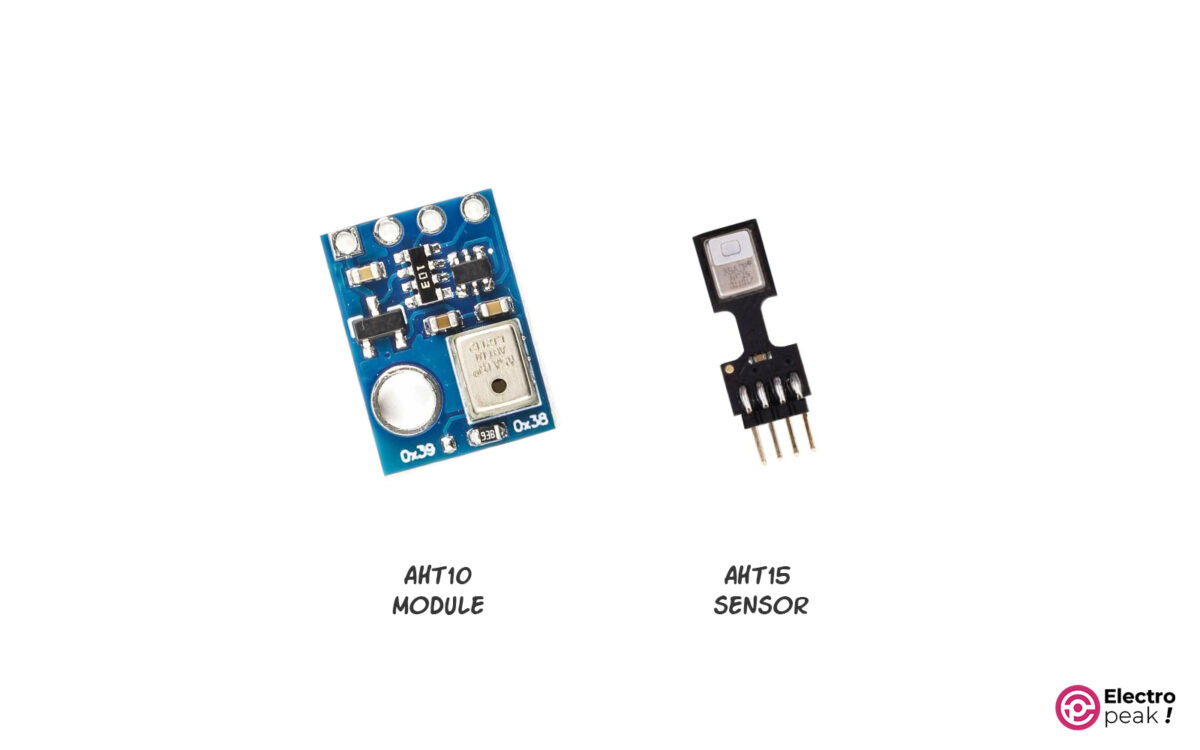
12- HTU21D Temperature and Humidity Digital Sensor
HTU21D(F) is another digital sensor that measures temperature and humidity with an I2C interface.
These sensors are also internally calibrated, and each chip has its own electronic identification code.
They can also change the humidity resolution of the sensor (from 8/12 bits up to 12/14 bits at most).
The PTFE-type filter (frame) protects the sensor against dirt and water.
HTU21D Specifications
• Communication protocol: I2C
• Operating voltage: 1.5 to 3.6 volts
• Temperature range: -40 to 125°C
• Humidity range: 0 to 100% relative humidity
• Accuracy: ±0.3°C and ±2% relative humidity
For more information, you can download the datasheet below.
You can purchase the HTU21D temperature sensor and module from the links below.
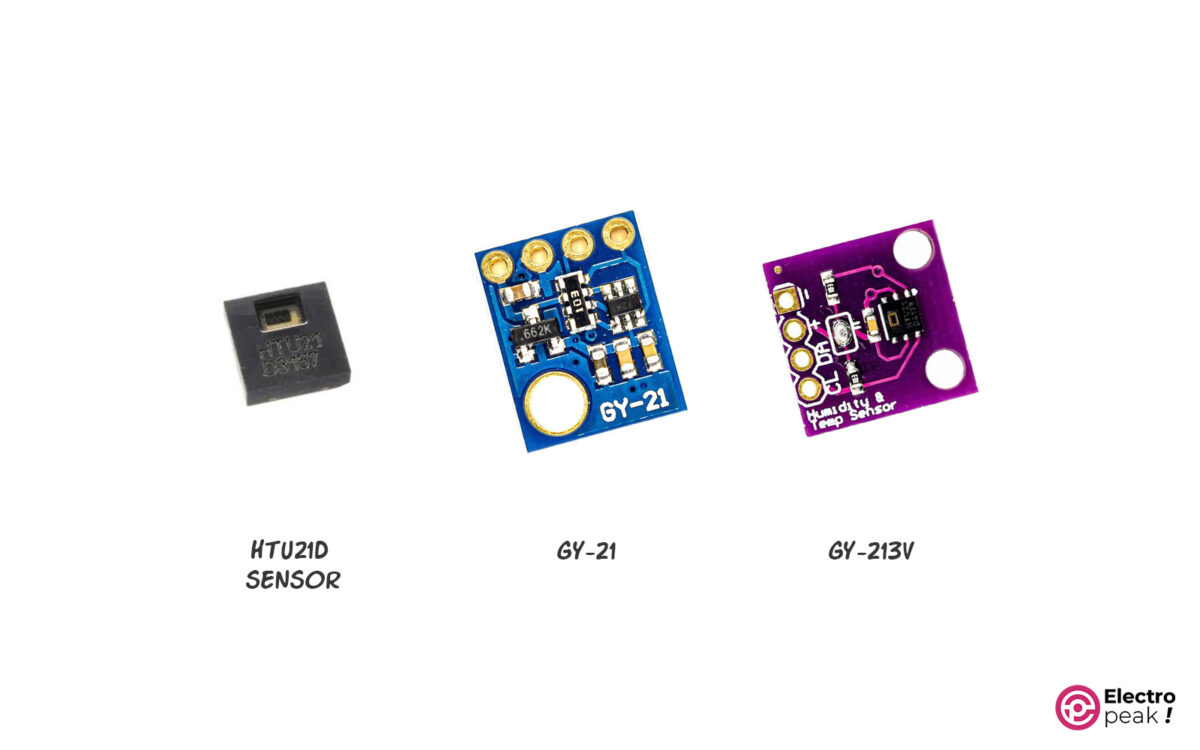
13- SI7021 Temperature and Humidity Digital Sensor
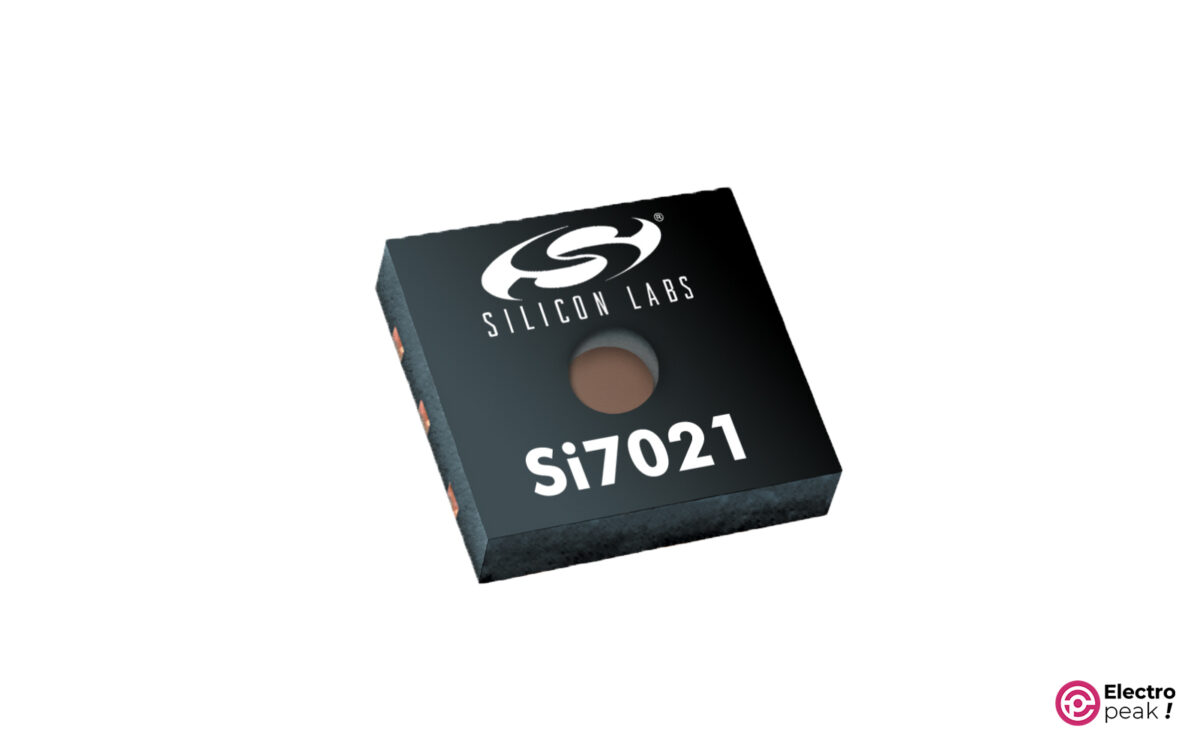
SI7021 is an integrated CMOS IC with an I2C communication protocol. It is also calibrated, and the results are stored in a non-volatile memory on the chip. In addition, the maximum accuracies of humidity and temperature are ±3% and ±0.4°C, respectively.
SI7021 has various applications, including thermostats, humidity meters, breathing therapy, weather forecasting, tablets, cell phones, etc.
SI7021 Specifications
• Communication protocol: I2C
• Operating voltage: 1.9 to 3.6 volts
• Temperature range: -40 to 125°C
• Humidity range: 0 to 100% relative humidity
• Accuracy: ±0.4°C and ±2% relative humidity
To interface SHT3X, you can visit the following link: Interfacing SI7021 Module with Arduino.
You can purchase the SI7021 module and temperature sensor from the link below.

14- Thermocouple
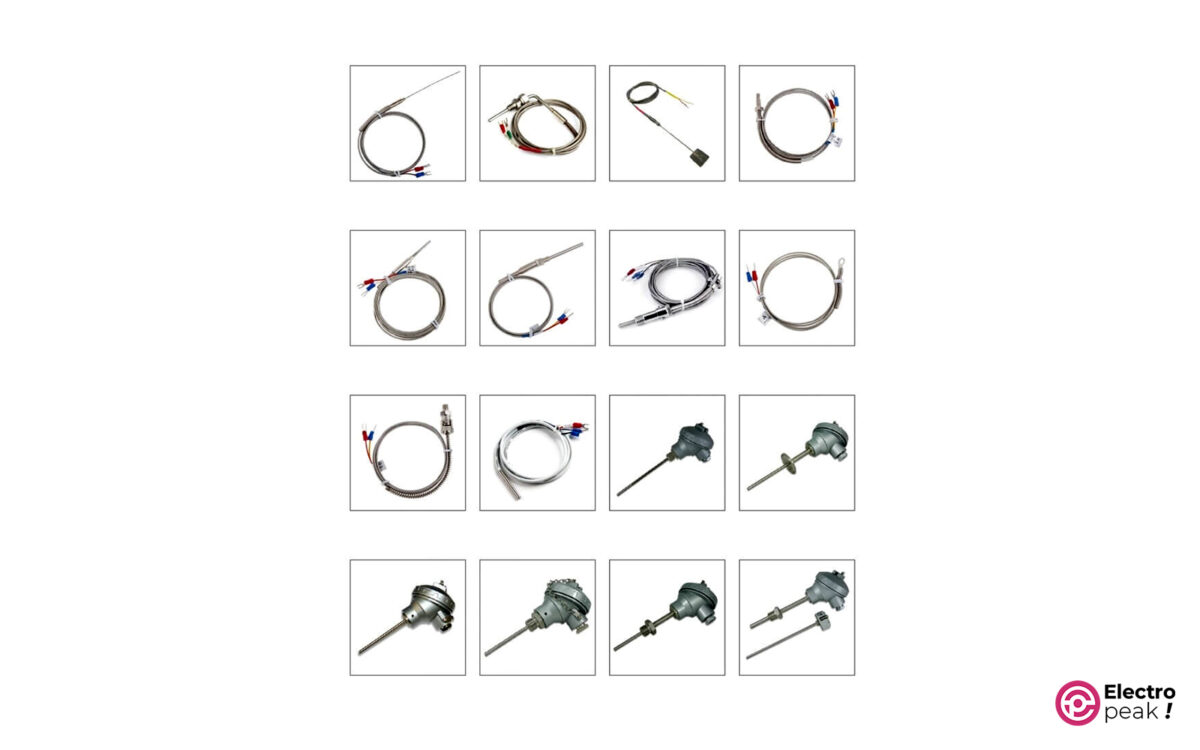
Thermocouples are widely used in industries due to their wide temperature range. These components are used in heavy industries rather than delicate ones. Yet, since there is no clear border between the two, thermocouples might also come in handy for measuring temperatures in an electronic project. They likewise produce an analog voltage at their output. Various types of thermocouples differ mostly in their temperature measurement range.
To interface these thermometers with microcontrollers, you often need an interface circuit such as the MAX6675 thermocouple module. For more information, head over to the link below.
Interfacing MAX6675 Thermocouple Module with Arduino
Measuring the temperature of fluids like water and determining a furnace’s temperature are common applications for thermocouple sensors.
You can purchase the thermocouple sensor and the interface module from the link below.

15- RTD Sensors
Resistance temperature sensors (RTDs), like thermocouples, are more common in the industry. PT100 is the most famous RTD sensor.

Interfacing PT100 Sensors with Arduino
Since PT100 has an analog output, it must be connected to the analog input pins of Arduino.
Connect the circuit as shown below. The blue wire can be connected to any analog pin from A0 to A5.
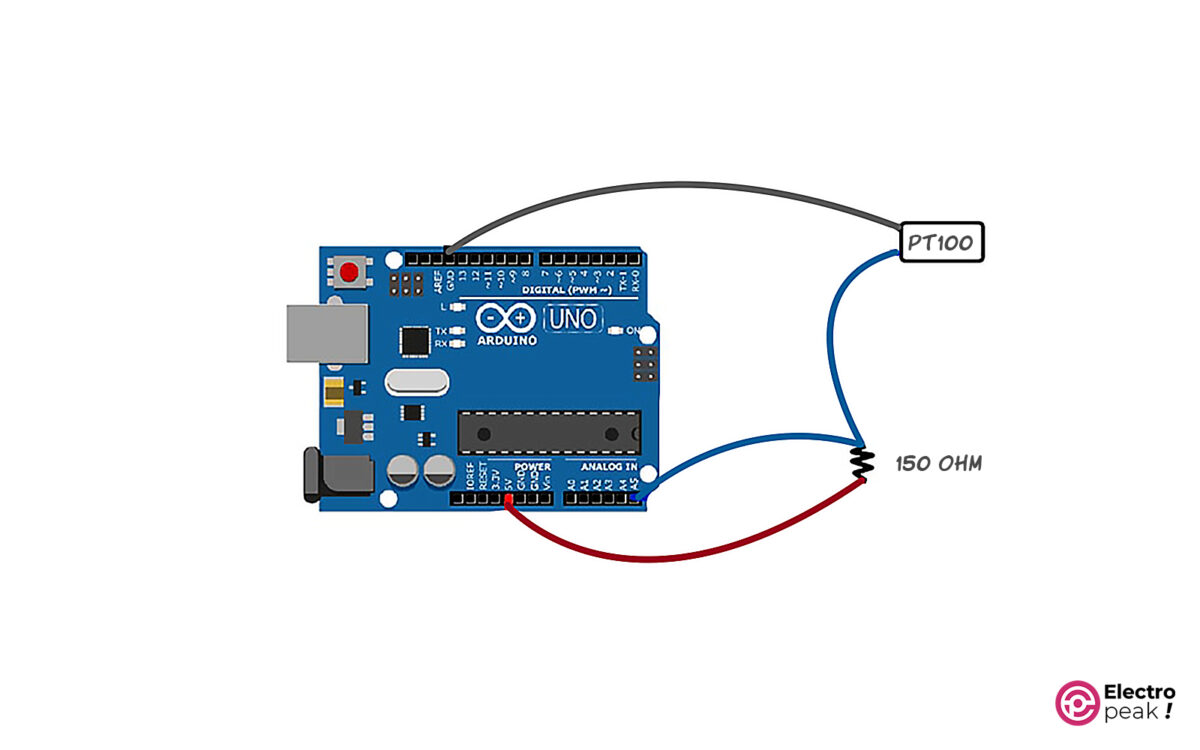
Comparison of Arduino Temperature Sensors
* Some sensors are available in the market both as chips and modules. Remember that each module brand may have a different supply power. For more information, check out the module datasheets.
** The resolution of analog sensors depends on the resolution of the analog-to-digital conversion unit.
Bottom Line: What is the Best Arduino Temperature Sensor?
In this article, we covered many temperature sensors and their main features. You can use them all with Arduino or other microcontrollers.
• Sensors with an analog voltage output can also be used in analog circuits even without a microcontroller.
• DHT temperature and humidity sensors are common thermometers that are both affordable and easy to interface. They also offer an acceptable resolution for routine temperature measurements. However, they perform poorly at temperatures above 80°C.
• LM35 sensors are a practical and inexpensive option for measuring higher temperatures close to 150°C. To read the temperature value from these analog sensors, you need to connect their output to the analog input of Arduino. LM75 is similar to LM35 but with an I2C output. LM75 also offers higher measurement accuracy compared to LM35. Neither of these sensors can measure humidity.
• The BME280 module is the only model that can be controlled and set up using the SPI communication protocol.
In a nutshell: to choose the best temperature sensor, first determine the features you need and then purchase one or more sensors. Next, check out the datasheets for more details. To interface and work with each sensor, visit the links provided in this article or search for similar projects on the Internet.
Good luck.

